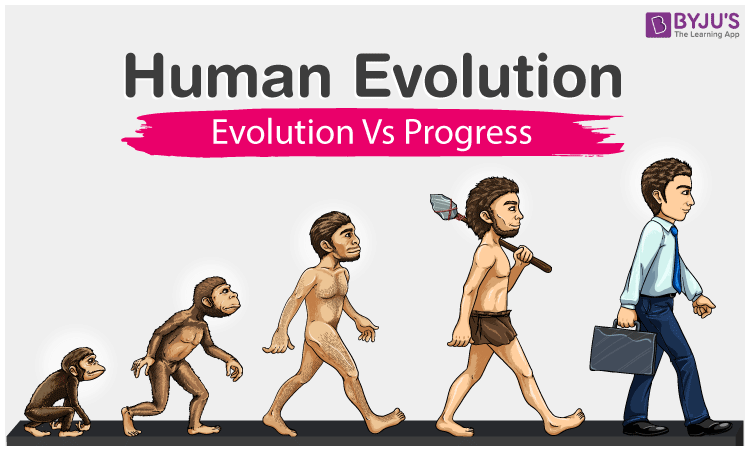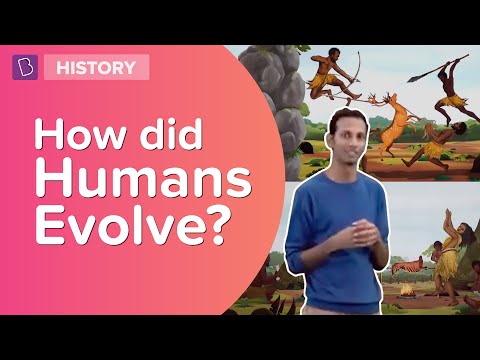According to several theories of evolutions, living organisms alter their physical and anatomical structure over a long period for greater adaptations to the changing environment. Evolution resulted in speciation. The new species start to reproduce. Evolution of life on earth is not about the elimination of one species and arising of another but it is about emerging of new species with adaptation from the existing species. This new species may or may not be better than the older ones. Thus, evolution should not always be equated with progress.


Evolution vs Progress
Evolution is the progressive alteration in inherited traits over large spans of time, usually over generations. Environmental factors like temperature, climate, availability of resources, etc. had a great role in evolution. When an organism is required to utilize a niche, and they were not able to do so with their existing body design or structural components, evolution was initiated. Thus, we can say that evolution happened because the environment demanded modification to ensure survival and sustainability of the species, and not because the older version was defective. We can’t call this progress.
Even though this is not the case in all instances, evolution enables an organism to adapt and thrive in an environment that was previously not favourable. Let us take a look at modern-day giraffes, these animals have extremely long necks and it enables them to reach higher into the trees for food.
Ancestors of giraffes looked like gazelles, and they thrived in the grasslands of Africa 15 million years ago. Food was more abundant in the trees and the members that were able to exploit this opportunity passed on their genes and gradually over time, species with longer necks emerged. Eventually, they started to branch out into different species and the giraffe is the most successful among them today.
Variation is the root cause of evolution and it gives the organism a better chance of survival in its habitat. Evolution is not a ladder of progress, but a by-chance process. In other words, “luck” plays a crucial role in evolution and extinction. For instance, 65 million years ago, there were other animals that were comparable to dinosaurs in terms of evolutionary progress such as ancestors of crocodiles and alligators. But during the late Cretaceous mass extinction, the non-avian dinosaurs became extinct and the ancestors of crocodiles and alligators survived. Neither had any evolutionary advantage over each other and both competed for almost the same resources.
The concept of natural selection is ‘survival of the fittest’, and individuals who are unfit were weeded out. In evolution, all that matters is how an organism ensures its existence in its environment. It is not about perfection.
For example, take a look at thermophilic bacteria and archaebacteria. Evolution of archaebacteria resulted in the thermophiles. But we can’t say it is the better version of archaebacteria. This is because the archaebacteria still exist and both of these species are best suited to thrive in their respective environments.
Progress is about the upgrading of levels, i.e., the next level is better than the previous ones. Evolution is the adaptation of an organism to live a better life in its habitat. Adaptation to one habitat may not be the same as adaptation to other habitats. Thus, evolution is relative to environmental conditions, not progress.
Human Evolution
Evolution has created a huge biodiversity. Natural selection, genetic drift, and speciation are the factors that shaped the biodiversity. The new species have never left a choice to mate with the previous ones. Each species had to reproduce in their own way with their own group members. This leads to the branching of species i.e., a common ancestor diverges into two or more different lineages. Human evolution also has the same story. If we talk about human evolution, the first thing which comes to mind is a chimpanzee. Even though human evolution is not from chimpanzees, they share a common ancestor. Both the species of human and chimpanzee evolved in their own way from a common ancestor as per their living conditions.
Nowadays, we can trace the evolutionary relationships between species easily by using fossils, DNA sequences, and palaeontological excavation, etc. It is said that human evolution began in Africa. The earliest species of Homo to be ever discovered is Homo habilis, who lived nearly 1.75 million years ago. The next major step in evolution was when our ancestors, Homo erectus stepped out of Africa and migrated to other parts of the world. They mingled with the new and the old ones to produce a diversity of human species. We find different races of people around us, but all of them emerged from a universal common ancestor of all primates.
To learn more about human evolution with video lessons download BYJU’S – The Learning App.

Frequently Asked Questions on Human evolution progress
What is the role of natural selection in human evolution?
An example of natural selection in humans is the prevalence of sickle cell anaemia in Africa. They are resistant to malarial infection in heterozygous conditions.
Did humans have a third eyelid?
Human beings have remnants of the third eyelid called the nictitating membrane. It is a vestigial organ. It was present in our ancestors.
What are vestigial structures in humans?
The palmar grasp reflex, wisdom teeth, tail bone, ear muscle, appendix etc. are the vestigial structures in humans.

Comments